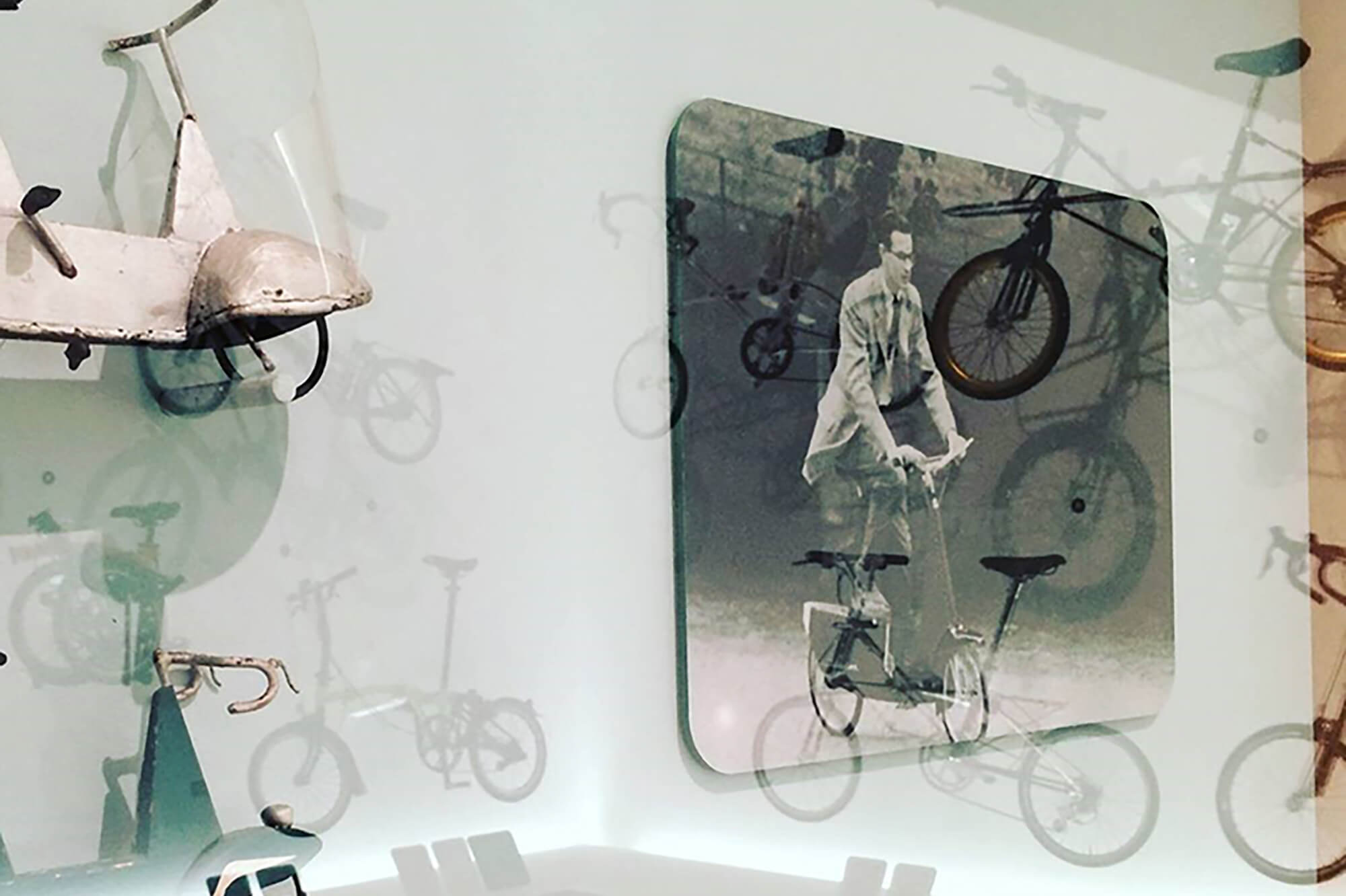
Cycle Revolution & Bicycle Design: An Inspiring Visit to the Design Museum
My husband is a bike nut. For as long as I’ve known him he has been an avid cyclist, and thankfully, he encouraged me to get riding a few years ago despite my lack of courage on our busy city streets.
Now I can’t imagine life without my peddled companion!
So on a recent visit to London, England, we took the opportunity to visit an exhibition called Cycle Revolution celebrating bicycle design and culture at the Design Museum.
The exhibition was impressive, not only for its content but also for the way they told the story. From entry to exit, there was a great sense of pace, a nice variety of displays and an abundance of design inspiration.
The Exhibition Experience
On arrival, we were welcomed by a set of stairs covered in tire tracks leading the way up to the exhibition space and at the top of the staircase the first thing on display was a large scale photograph of cyclists on a beautiful curved road. It speaks to the idea of where we’ve been, where we are and where we’re heading.

The exhibition space followed a similar horseshoe shape as the road seen in the main exhibition photograph.
The outside walls were adorned with a plethora of bicycles wrapping the entire exhibition space. The range of bicycles was wide but not overwhelming. There was an interesting mix of old and new and they were grouped into 4 sections: high performance bikes used for competition, all-terrain bikes for thrill seekers, city bikes for urban commuting and lastly, cargo bikes for carting around anything from extra passengers to products.


The 1888 Rover Safety Bicycle was designed as a safer alternative to the Penny Farthing.

The Raleigh Chopper designed by Alan Oakley in 1969 became an icon of 1970s cool.
Bright yellow panels with modern infographics provided a glimpse at the unbelievable rigor that a team endures for a Tour de France race.
Playful icons and bold typographic numbers worked well to reveal the statistics in a digestible and engaging manner. For example, the total calories burned during the 2015 Tour de France = 70,000 which = 265 beefburgers!


Another section of the exhibition included a group of screens, each equipped with a static bicycle saddle seat where attendees could sit and view various short films about independent bicycle designers and builders.
Beautifully shot and narrated, the films bring you into the mind of the designer and provide a reminder of how limitless the possibilities are to improve upon this age old concept.

One of my favorites was this short film about bespoke bike designer Caren Hartley.
She talks about designing a bike for a photographer and some of the unique considerations such as ensuring space for equipment and rethinking the typical large tire model to retain usability while streamlining the look.
Before designing bikes, she was a jeweler which is quite evident in her level of care and attention to detail.
It’s also evident that giving close consideration to the various types of riders and their environments is continuing to drive change as designers investigate new and untapped opportunities to improve on the bicycle.
On a broader spectrum, the exhibition looks at the impact cycling has on our planet, highlighting what specific cities are doing to support cycling as an alternate, or sometimes primary, mode of transport.
Whether you’re a cycling enthusiast or not, Cycle Revolution gives pause for thought on how an age old concept can continually be iterated, improved and innovated upon based on the needs of people. It’s a great reminder of the core of user experience design and why we do it.

Comments
Related Articles



